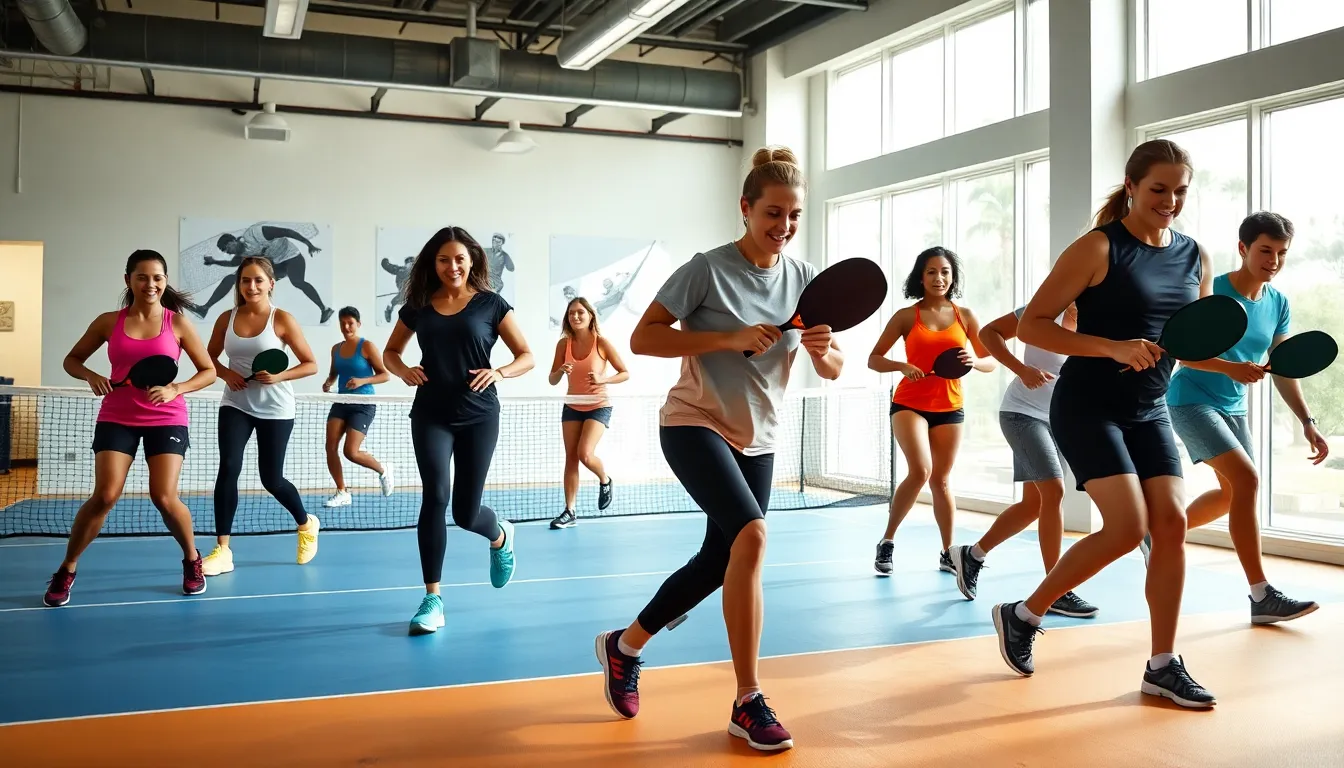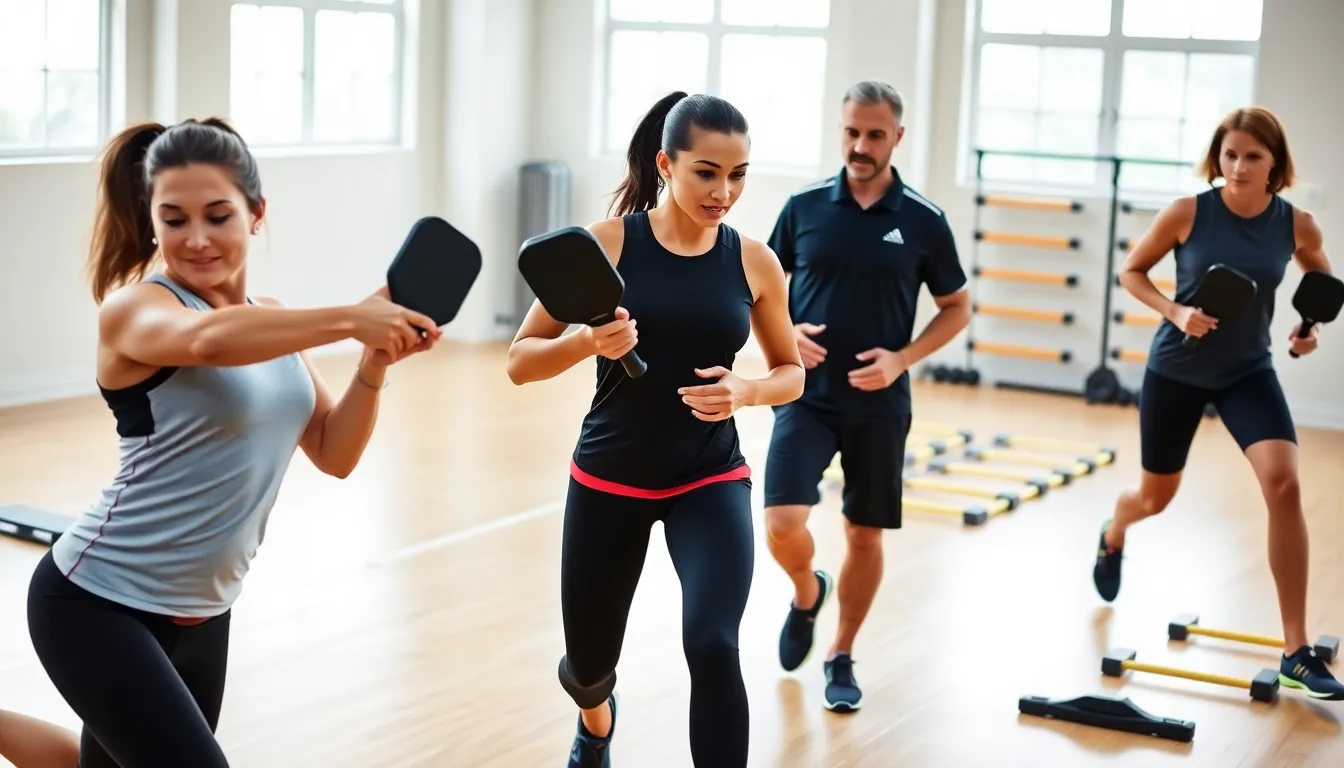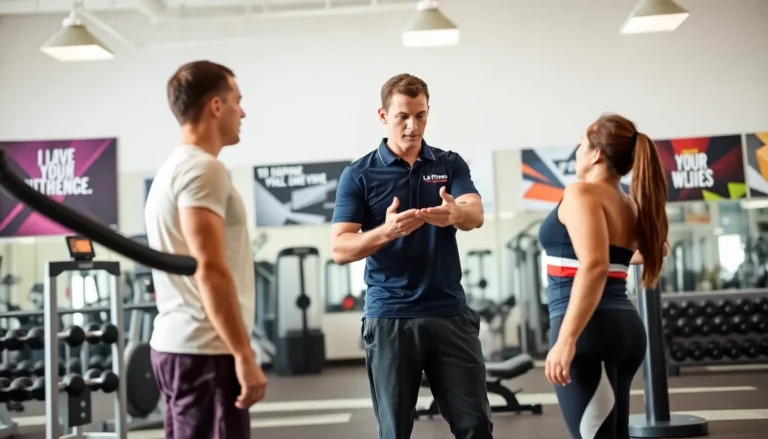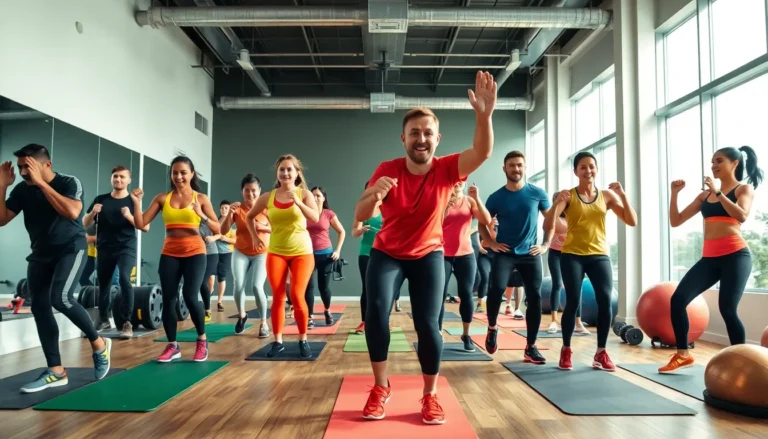Imagine zipping across the court, effortlessly returning serves while your friends gasp in admiration. That’s the pickleball dream. But herein lies a question: how do you get there? Pickup a paddle without the proper fitness regime and you might as well be trying to win the Tour de France on a tricycle. In this guide, you’ll uncover how fitness training tailored for pickleball enthusiasts can elevate your game and keep you off the injury list. Get ready to jump into the realm of strength, agility, and endurance that’ll have you ruling the court.
Table of Contents
ToggleUnderstanding Pickleball and Its Physical Demands

At its core, pickleball is an exhilarating mix of tennis, badminton, and ping pong. Played on a smaller court than tennis, it’s a game that demands quick reflexes and strategic positioning. Each serve, volley, or dink requires not just skill, but also a solid physiological foundation. Players must be agile, think about darting sideways to return a shot, and quick, like a cat when a laser pointer hits the floor. This unique blend of movements makes pickleball a fun yet physically taxing sport.
Also, matches tend to be fast-paced, leading to high heart rates and increased calorie burn. This means players will want to build their stamina, ensuring they stay energized throughout the game. In essence, understanding these physical demands is crucial first step for anyone looking to improve their performance.
The Game’s Challenges
The sport isn’t just about hitting a ball over a net: players experience sudden bursts of speed, changes in direction, and the need for explosive power. So, conditioning for the sport involves more than basic fitness: it’s about preparing for the specific nuances of the game.
Key Physical Skills Required for Pickleball
A successful pickleball player doesn’t just rely on sheer luck: they harness several key physical skills that enhance their performance. Let’s break these down into bite-sized chunks.
1. Agility
Quick footwork is essential. The ability to change direction at a moment’s notice can make or break a point. Players who train agility are often the ones leaping seamlessly from corner to corner.
2. Endurance
Long matches can leave players gasping for breath. Building up endurance is critical so that stamina doesn’t wane before the game does. Who wants to be the last person standing when everyone else is still going strong?
3. Strength
While pickleball may not appear overtly strenuous, it requires a surprising amount of physical power. From swinging the paddle to lunging for the ball, strength must not be underestimated.
4. Coordination
Pickleball blends various movements. Good hand-eye coordination allows players to hit the ball accurately and react quickly to opponents’ shots.
Summarizing, developing these physical skills is pivotal for anyone taking their pickleball game seriously.
Essential Components of Pickleball Fitness Training
Creating a structured fitness training plan for pickleball should include several essential components, tailored specifically to the demands of the game. Here’s a closer look.
Strength Training for Pickleball Players
Focusing on muscle groups utilized in pickleball is key. Exercises like squats, lunges, and resistance band workouts will build core strength, leg power, and overall upper body resilience. Players often underestimate the importance of a strong core: it stabilizes the body and helps in maintaining balance during intense rallies.
Cardiovascular Conditioning for Endurance
To stay competitive, incorporating cardiovascular workouts is a must. This could range from high-intensity interval training (HIIT) to longer steady-state cardio routines. Activities like cycling, running, or swimming will aid in building aerobic capacity, allowing players to sustain their energy levels throughout lengthy matches.
Flexibility and Mobility Workouts
Flexibility is often overlooked, yet it plays a vital role. Stretching routines focused on the legs, back, and shoulders will help maintain mobility and reduce the risk of injury. Yoga and Pilates can also enhance flexibility, contributing to improved performance on the court.
Injury Prevention Strategies for Players
Nothing can sideline a player faster than an injury. To keep on top of the game, injury prevention strategies need to be incorporated into training routines.
Firstly, proper warm-ups and cool-downs should never be skipped. Think of your muscles as elastic: without warming them up, they can snap instead of stretch. So, a routine combining dynamic stretches followed by static stretches post-training can improve flexibility and readiness.
Strengthening key muscle groups, especially around the knees and shoulders, significantly reduces injury risk. Balance training exercises can further enhance stability. Considering cross-training can also broaden a player’s skill set while preventing repetitive strain injuries by engaging different muscle groups.
Creating a Balanced Training Plan
To build an effective pickleball fitness regime, players need a balanced training plan that takes all aspects into account. It’s essential to have a well-rounded approach incorporating strength, endurance, flexibility, and recovery.
Weekly Structure
Monday: Strength training focusing on legs
Tuesday: Cardiovascular conditioning (HIIT training)
Wednesday: Agility drills with light strength work
Thursday: Rest or active recovery day (light yoga or walking)
Friday: Total body strength training
Saturday: Long endurance cardio session
Sunday: Flexibility focused workouts
Incorporating rest days allows muscles to recover and rebuild, critical for long-term athletic performance. Listen to the body: if something doesn’t feel right, adjustments may be necessary. It’s not just about training harder but training smarter.




